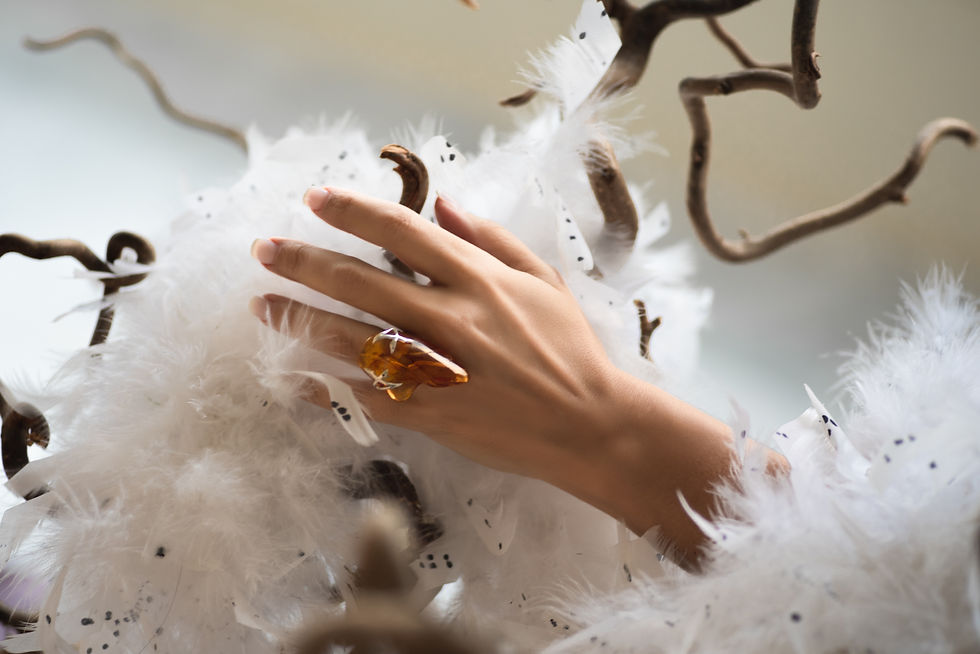AMBER

Amber is an organic gem. Organic gems are the products of living or once-living organisms and biological processes. Amber formed tens of millions of years ago when resin from ancient trees hardened and fossilized. Sometimes amber retains the form of drops and stalactites, just as it exuded from the ducts and receptacles of the injured trees. It is thought that, in addition to exuding onto the surface of the tree, amber resin also originally flowed into hollow cavities or cracks within trees, thereby leading to the development of large lumps of amber of irregular form. Some types of amber are found in the ground. Other types have been freed and carried by tides, ending up on beaches or near-shore areas. Pieces of amber torn from the seafloor are cast up by the waves and collected by hand, dredging, or diving. Elsewhere, amber is mined, both in open works and underground galleries.
Amber has been found throughout the world, but the largest and most significant deposits occur along the shores of the Baltic Sea in sands 40,000,000 to 60,000,000 years old. Amber is globally distributed, mainly in rocks of Cretaceous age or younger. Historically, the Samland coast in Prussia was the world's leading source of amber. The first mentions of amber deposits here date back to the 12th century.[ About 90% of the world's extractable amber is still located in that area, which became the Kaliningrad Oblast of Russia in 1946. The Baltic coast bordering Germany, Poland, and Russia is still an important source of amber.
The English word amber derives from Arabic anbar via Middle Latin ambar and Middle French ambre. The classical names for amber, Latin electrum and Ancient Greek ἤλεκτρον (ēlektron), are connected to the term elektron meaning "beaming sun". Amber is sometimes called “gold of the North.” According to myth, when Phaëton's son of Helios (the Sun) was killed, his mourning sisters became poplar trees, and their tears became elektron, amber. Homer praised its bright glow. The Egyptians buried it in tombs for the afterlife.
Amber occurs in a range of different colors. As well as the usual yellow-orange-brown that is associated with the color "amber", amber itself can range from a whitish color through a pale lemon yellow, to brown and almost black. Milky-white opaque varieties are called bone amber that owes its cloudy opacity to numerous tiny bubbles inside the resin. Other uncommon colors include red amber (sometimes known as "cherry amber"), green amber, and even blue amber (originating from the Dominican Republic), which is rare and highly sought after. Blue amber turns blue in natural sunlight and any other partially or wholly ultraviolet light source. In long-wave UV light, it has a very strong reflection, almost white. The turbidity of some amber is caused by inclusions of many minute air bubbles. The inclusion of other substances can cause the amber to have an unexpected color. Pyrites may give a bluish color. However, the so-called black amber is really only a kind of jet. Many hundreds of species of fossil insects and plants are found as inclusions. Deeply colored translucent to transparent amber is prized as a gem material.
Amber smells good when you rub it. Although an oil made from burned amber was used in scents in ancient times, it is not used in perfume today.
Amber is surprisingly light: in fact, it will float in a saturated salt solution.
